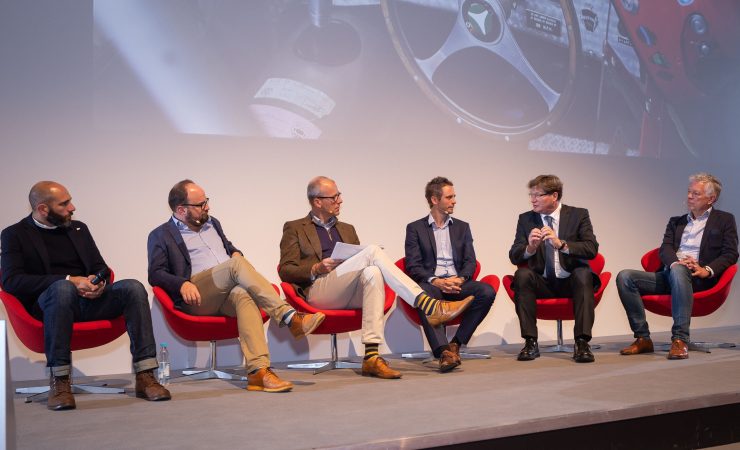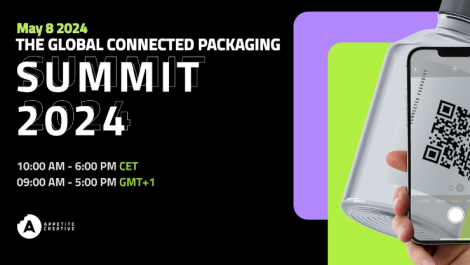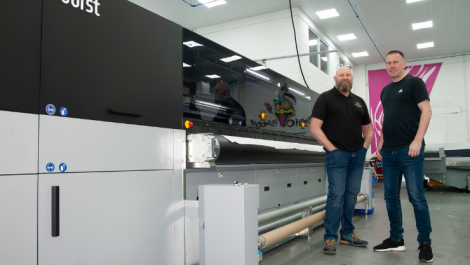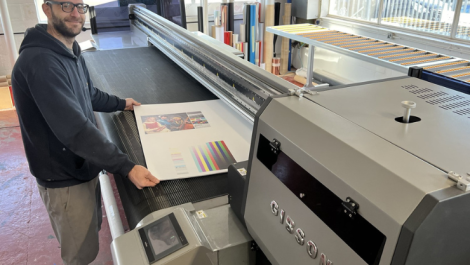Canon’s second Future Promotion Forum brought together figures from across print, communications and marketing to explore what role print will play in the communications strategies of the future.
The event, held on 24 September at the company’s Customer Experience in Poing, Germany, was opened by Peter Wolf, Canon Europe’s vice president of production printing products. Mr Wolf introduced the theme, ‘Boost engagement,’ before going on to explain his belief that print remains the most trusted communications channel and that it still has an integral role to play in a well-rounded marketing campaign.
‘Promotional printing is a growth area,’ Mr Wolf told Digital Printer. ‘Which is why we have added the Future Promotion Forum to our portfolio of events. We invest in things like the Forum, and it is an investment, because we really believe days such as this will make a difference to the industry.
‘I don’t think there are many places where you find people together from three different sectors. Today we will put PSPs, print buyers and marketers in the same room and give them a chance to see things from a different perspective. Everyone needs to understand the need for greater collaboration.’
After Mr Wolf left the stage, keynote speaker Dr Patrick Dixon gave his predictions on what the future of marketing will look like. Dr Dixon touched on a huge array of topics, but his key message was that programmatic print is the way forward, with people in the years ahead set to demand ultra-personalisation, not billboards or television ads.
He believes that, once they know the opportunity exists, companies will seize the chance to produce printed adverts for specific people, in specific contexts, working the same way the Google advertisements do online.
A physician by trade, Dr Dixon also explained that MRI scans have demonstrated that the feel and smell of printed materials trigger a far stronger reaction in the brain than online equivalents. This is why marketers should be eager to get physical materials in people’s hands. The problem? ‘Most marketers have no idea what digital printing can do when it comes to personalisation and short print runs.’
The morning’s other speakers were Innossabi co-founder Catharina van Delden, who spoke on why brands need to innovate to stay ahead in the digital age, and Olaf Hartmann, a partner at Multisense Institute for Sensory Marketing, who explained the power of touch and its impact within advertising.
In the afternoon Faye Hawkins, managing director of First Base Unlimited, took to the stage to give the marketer’s perspective. She insisted that agencies are very much aware of the power of print, but that the reason it isn’t being utilised fully is simply down to people’s perception of it.
She conceded that agencies are worried that suggesting print to brands makes them seem outdated or to be pushing the most expensive option, before finishing by issuing a rallying call for printers to educate marketers on exactly what digital print is capable of and how it can help them do their job.
The day was rounded off by Patrick Brück, team lead at HubSpot, who explained why marketing is at its most successful when it is customer centric, before Deutsche Post’s head of business development Lars Schlimbach finished by explaining how he thinks a bridge needs to be built between the online and offline worlds.
On display throughout the day were Canon’s latest offerings in digital print, including the recently launched imagePress C165, the Océ Arizona 1380 GT UV flatbed and Océ Colorado 1650 wide-format printer, as well as the Océ ProStream 1000, Océ ColorStream 6000, Océ VarioPrint i300 inkjet presses.





